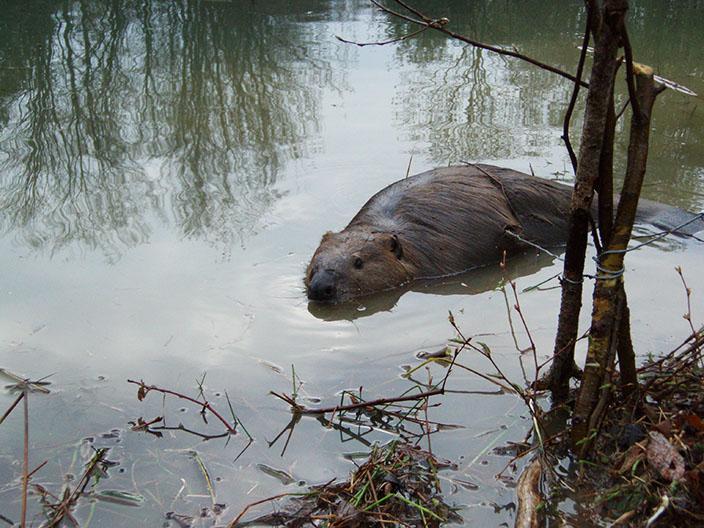Beavers are the largest rodent in North America. They are shy and primarily active at night. On dry land beavers move slowly, but in the water they are much quicker. They can stay submerged underwater for up to 15 minutes. Beavers mark their territory with a musk they secrete known as “castoreum.” They are also able to secrete an oil that helps their fur repel water.
| Appearance | Beavers have glossy, brown coats of fur that vary from tan to dark brown. They also have a scaly, leather-like covering on their long, flat tails. |
| Length | Up to 40 inches, plus an additional 8 to 12 inch tail |
| Weight | Anywhere from 40 to 60 pounds |
| Habitat | Beavers like to live around bodies of water. You can find them by streams, creeks, rivers, timbered marshlands, and lakes inside of forests. They live in both remote areas as well as those occupied by people. |
| Food | Aquatic tubers, bark, cattails, ferns, grasses, tree buds, twigs, and water lilies |
| Predators | Bobcats, bears, coyotes |
| Location in Pennsylvania | Statewide, but more common in northern PA counties |
| Extra facts | Beavers will slap the water with their tail when they sense danger. They have a strong sense of hearing and smell. Beavers store branches, twigs, and small logs at the bottom of their home ponds to use as food in the winter. In captivity, a beaver can live as long as 15 years. In the wild, they live anywhere from 10 to 12 years. |
Complaints
Beavers will cut down trees, make dams and flood roadways. Beaver feces in water can carry a bacteria known as Giardia that can make humans very sick.
Solutions
Beavers can be trapped with foothold traps, body gripping traps, snares, and cage style traps. They can be shot with firearms. Before the beavers are removed, it is recommended that you put wire mesh around specific trees that you want to save. It is important to pull out dams after the beavers are removed.

For more information about beavers, check out the Pennsylvania Game Commission’s wildlife notes.
